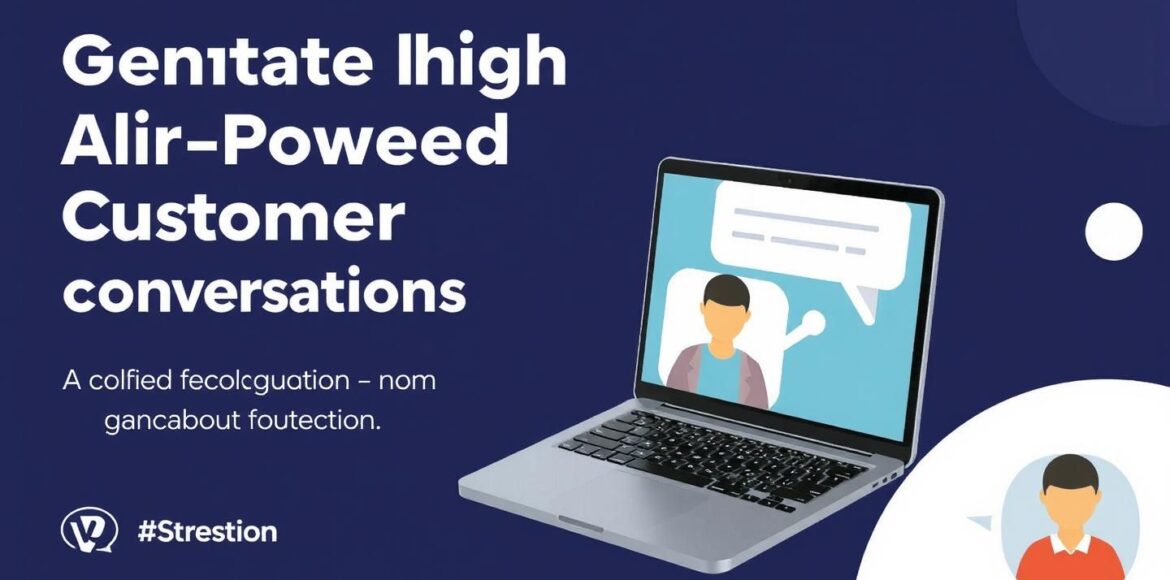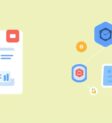
Businesses are increasingly turning to AI-powered customer conversation templates to automate and enhance communication across channels. By leveraging advanced artificial intelligence tools and structured frameworks, organizations aim to maximize efficiency, consistency, and personalization in customer service. In this article, we’ll explore how these templates work, design tips, practical examples, pitfalls to avoid, and resources for building effective AI-driven customer interactions.
Understanding AI-Powered Customer Conversation Templates
AI-powered customer conversations utilize artificial intelligence technologies—such as natural language processing, machine learning, and conversational bots—to automate and enrich interactions between companies and their customers. These tools can quickly interpret queries and respond in real-time, creating a seamless, human-like experience across platforms like chat, email, and social media. Key advantages include 24/7 support, consistent and accurate responses, scalability for high volumes, and the ability to personalize engagement based on customer data. Integrating AI into support operations significantly improves response times, reduces costs, and delivers customer experiences that align with modern expectations. For detailed examples of how virtual assistants automate service, see our article on building a virtual receptionist with TheAgentBot.
The Benefits of Templates in AI Customer Interactions
Templates offer a standardized structure for AI customer communication. By using predefined response frameworks, businesses ensure clarity and logic in information delivery, which streamlines conversations and minimizes misunderstandings. This not only increases response speed but also helps maintain uniformity in brand messaging. For customers, such predictability and professionalism lead to smoother, more satisfying exchanges. By applying templates strategically, brands reduce errors, accelerate resolutions, and build a reliable foundation for scalable, high-quality support.
Essential AI Conversation Templates for Key Scenarios
Here are five foundational templates used in AI-powered customer conversation systems:
-
Support Request Resolution
Template: “Hi [Customer Name], I understand you’re experiencing [issue]. I’m here to help! Can you please share a bit more detail or any error messages you’re seeing? While we work on this, try [suggested quick fix]. I’ll keep you updated and ensure a fast resolution.” -
Sales Inquiry Engagement
Template: “Hello [Customer Name], thank you for your interest in [product/service]. Based on what you’re looking for, I’d recommend [solution]. Do you have any questions, or would you like to schedule a quick demo to see how it works for your needs?” -
Feedback Collection
Template: “Hi [Customer Name], we’d love to hear about your experience with [product/service]. Your feedback helps us improve. Could you share what you liked and anything we could do better? It’ll only take a minute, and your input is very valuable to us!” -
Customer Onboarding
Template: “Welcome to [Company], [Customer Name]! We’re excited to have you. To get started, here’s a quick guide and some helpful resources. If you need any assistance, just reply here, and I’ll be happy to walk you through each step.” -
Upsell or Cross-Sell Recommendation
Template: “Hi [Customer Name], I noticed you’ve been enjoying [current product]. Did you know you can enhance your experience with [complementary product/feature]? If you’d like, I can provide more info or set up a free trial for you to explore its benefits.”
For further guidance on automating FAQs with AI, review AI agents for handling FAQs on your website.
Design Tips for Building Strong AI Conversation Templates
To craft effective templates, first define the primary goal of each conversation—whether resolving support requests, collecting feedback, or assisting with purchases. Map common customer journeys and scenarios, then structure templates accordingly. Some best practices include:
- Begin with a greeting that matches your brand voice; personalize with customer names where possible.
- Structure the conversation with logical branching, including prompts and clarifying questions.
- Keep language clear and concise to avoid confusion.
- Include essential components, such as an introduction, purpose statement, solution sharing, and a closing call to action.
- Maintain consistency in tone that reflects your brand personality, whether playful or professional.
- Avoid industry jargon unless your audience is familiar; always offer an option to escalate to a human agent if necessary.
Regularly test templates, gather customer feedback, and iterate to align with changing expectations and products. Consistent review drives ongoing improvement and a stronger customer experience.
Case Studies: Real-World Impact of AI-Powered Customer Conversation Templates
Explore how leading brands have applied AI-powered templates for measurable gains:
- Sephora: Sephora used chatbot templates to respond rapidly to product queries, order status, and beauty advice. The company saw a 20% rise in customer satisfaction and 15% less workload for live agents thanks to AI-driven standardized replies.
- Domino’s Pizza: Domino’s automated its online ordering system with AI templates, resulting in a 30% increase in digital orders and a decrease in completion times, allowing for greater order volumes during peak hours with consistent quality.
- Bank of America: With its Erica chatbot, the bank deployed AI templates to assist customers with payments, transactions, and advice, resolving over 90% of 35 million requests without human escalation—lowering support costs and improving engagement.
- H&M: By incorporating AI-powered conversation templates into its virtual stylist feature, H&M offered tailored style advice, growing basket size by 11% and boosting conversion rates while collecting valuable trend data for inventory planning.
These real-world examples show how structured templates lead to improved customer satisfaction, greater operational efficiency, and revenue growth across various sectors.
Pitfalls to Avoid When Implementing AI Templates
Despite their benefits, AI-powered conversation templates can sometimes backfire if not thoughtfully designed or maintained. Common issues include:
- Overly Rigid Language: Relying on generic, scripted language can make interactions feel robotic and disconnected. Ensure your templates are conversational and brand-appropriate.
- Lack of Personalization: AI that doesn’t reference user context or past interactions will offer irrelevant or repetitive replies. Tailor responses to individual customers for a genuine feel.
- Outdated Content: Static templates may fall behind as services and customer needs evolve. Regular updates informed by analytics and conversation logs are critical.
- No Escalation Path: If templates cannot escalate complex issues to human agents, customer frustration rises. Ensure handoff options are clear and easy to access.
To maximize success, focus on adaptability, personalization, continuous improvement, and well-defined escalation procedures. For tips on streamlining service with AI, see 5 ways TheAgentBot can streamline your client interactions.
Resources and Tools for Building Effective AI Conversation Templates
Getting started requires the right platforms and reference materials. Consider these tools and resources:
- Platforms: Dialogflow, Microsoft Bot Framework, and Rasa provide intuitive tools for designing, training, and launching conversational agents with built-in natural language understanding and integration options.
- Template Libraries: Open-source collections like the Awesome Conversational AI list on GitHub offer dialog scripts and sample flows. Providers like Botpress and Botkit also supply industry-specific conversation blueprints.
- Educational Resources: Platforms such as Coursera, Udemy, and edX offer courses on intent recognition, conversation design, and automation. Provider documentation and community forums are excellent for troubleshooting and refining templates.
By integrating these resources, you can efficiently develop, test, and optimize AI-powered customer conversation templates tailored to your business needs.
Conclusion
AI-powered customer conversation templates represent the future of scalable, personalized support. When thoughtfully designed and implemented, they deliver faster responses, improved accuracy, and memorable experiences that elevate your brand. Prioritize structured frameworks, ongoing testing, and resourceful tooling to unlock the full potential of conversational AI in customer interactions.






